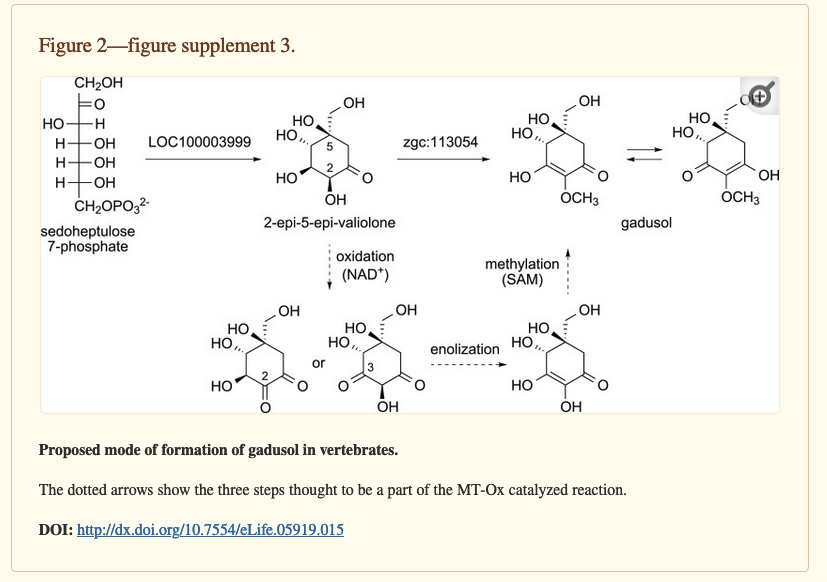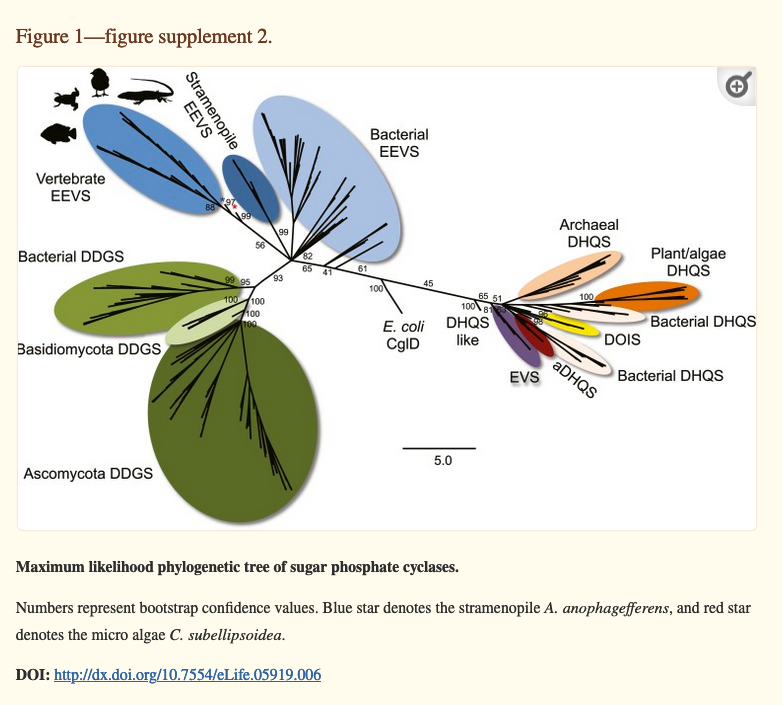The Evolution of "Sunscreen genes"
VGNC ·
Image by rawpixel.com on Freepik

This guest blog post has been contributed by Fiona McCarthy from the University of Arizona, a past member of our Scientific Advisory Board and friend and collaborator of the VGNC.
For those of us living in the northern hemisphere July means summer, and all those things associated with summer: sunshine, ice cream, holidays, trips to the beach and the inevitable fight to avoid sunburn. As uncomfortable as it is to consider the painful effects of sunburn, this is a story of what might have been if not for one of those strange quirks of evolution.
Marine organisms living in the photic zone are exposed to high levels of UV light. To deal with this, bacteria, fungi and algae produce UV protective compounds such as mycosporine-like amino acids (MAAs). MAAs are a heterogeneous group of hydrophilic molecules which protect against UV radiation and reactive oxygen species. A related compound in the MAA biosynthesis pathway is gadusol, which has been identified in a range of marine invertebrates and fish.

Figure from PMID:25965179
It was initially thought that the presence of gadusol in higher order marine animals was due to bioaccumulation of MAAs from algae and bacteria. However, in 2015 Osborn et al PMID:25965179 demonstrated that gadusol was directly synthesized in fish using a novel pathway other than MAA biosynthesis. In a set of elegant expression studies, the authors recreated the gadusol biosynthesis pathway using expression studies and demonstrated that the product of this pathway – gadusol - strongly absorbed UV light. In doing so they functionally characterized the role of two poorly characterized genes (one of which was at the time a dreaded “LOC” gene, the likes of which are frequently ignored or dropped from functional studies).

Figure from PMID:25965179
The gene referred to in the Osborn paper as “LOC100003999” has now been renamed as eevs (2-epi-5-epi-valiolone synthase) by the zebrafish nomenclature committee (ZNC) at ZFIN. The gene referred to using the alias “MT-Ox” is not yet named by ZFIN and is currently assigned the identifier “zgc:113054”. The “MT-Ox” gene encodes a multifunctional protein that has an N-terminal domain that shows similarity to a S-adenosylmethionine (SAM)–dependent methyltransferase domain and a C-terminal domain that is similar to a NAD+-dependent oxidoreductase domain. The researchers carried out a genetic engineering experiment, putting the two fish genes into yeast (S.cerevisiae) and showed that the MT-Ox protein could convert the eev protein to gadusol. Their hypothesis is that this happens via a multistep reaction including oxidation, enolization and methylation steps.
Moreover, a comparative analysis of these pathway genes across vertebrate lineages identified the same two genes conserved across amphibians, reptiles and birds, although they were lost in mammals. It is worth noting that the non-mammalian vertebrate lineages are full of these types of stories just waiting to be explored. A rudimentary comparison of representative proteins from human, zebrafish, chicken and amphibians shows that there are more than five thousand proteins missing from human but found in the other vertebrate lineages. This number sets a minimum value on what we don’t know; adding in multiple gene products from an additional 10,000 reptiles, 11,000 birds, 6,000 amphibians and 33,000 species of fish provides plenty of space for further discovery.
Gadusol production in vertebrates has been further studied to understand fundamental concepts such as vertebrate evolution and marine ecology. And - as you might expect - there is also interest in its application as a sunscreen. Many current chemical based sunscreen products contain oxybenzone and octinoxate which can get into the water when people swim and contribute to coral reef bleaching. These chemicals may also adversely affect human health, as they may act to disrupt endocrine signaling in peoples’ bodies. A new, natural based sunscreen would no doubt be welcomed by the health industry, consumers and environmentalists alike.
So as you apply your sunscreen this summer, take a moment to think about gene evolution… consider what might have been, and dream of what might still be waiting for us to discover.
